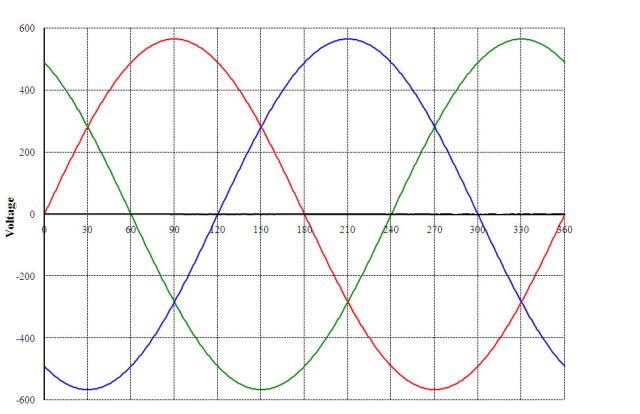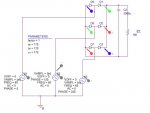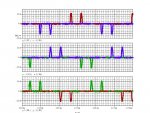gar
Senior Member
- Location
- Ann Arbor, Michigan
- Occupation
- EE
170521-0920 EDT
This thread is a derivative of a closed thread, and the title of this thread probably does not directly indicate the purpose of the original thread.
As I have previously said several times the original question was about the use of a particular 3 phase VFD with an associated motor and fan in a different application where only 1 phase power is available.
It is fairly self-evident that feasible power output will be determined by the diode rectifiers and/or filter capacitor. There are time constant factors, including load needs, that enter into the analysis. The power output requirements vary with time. When peak power needs occur (outside doors are opened) what peak power limitation (based on the end user's needs or desires) can be tolerated? Does perfect exhausting have to occur? These questions in relation to how hard can the VFD be loaded in 1 phase operation for short times will determine if the application will work.
Diode heating, capacitor heating, and ripple would seem to be the critical items to discuss.
.
This thread is a derivative of a closed thread, and the title of this thread probably does not directly indicate the purpose of the original thread.
As I have previously said several times the original question was about the use of a particular 3 phase VFD with an associated motor and fan in a different application where only 1 phase power is available.
It is fairly self-evident that feasible power output will be determined by the diode rectifiers and/or filter capacitor. There are time constant factors, including load needs, that enter into the analysis. The power output requirements vary with time. When peak power needs occur (outside doors are opened) what peak power limitation (based on the end user's needs or desires) can be tolerated? Does perfect exhausting have to occur? These questions in relation to how hard can the VFD be loaded in 1 phase operation for short times will determine if the application will work.
Diode heating, capacitor heating, and ripple would seem to be the critical items to discuss.
.




